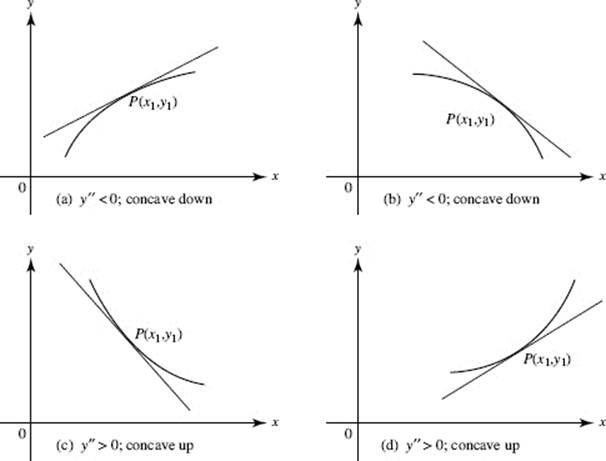Calculus AB and Calculus BC
CHAPTER 4 Applications of Differential Calculus
D. MAXIMUM, MINIMUM, AND INFLECTION POINTS: DEFINITIONS
The curve of y = f (x) has a local (or relative) ![]() at a point where x = c if
at a point where x = c if ![]() for all x in the immediate neighborhood of c. If a curve has a local
for all x in the immediate neighborhood of c. If a curve has a local ![]() at x = c, then the curve changes from
at x = c, then the curve changes from ![]() as x increases through c. If a function is differentiable on the closed interval [a, b] and has a local maximum or minimum at x = c (a < c < b), then f ′(c) = 0. The converse of this statement is not true.
as x increases through c. If a function is differentiable on the closed interval [a, b] and has a local maximum or minimum at x = c (a < c < b), then f ′(c) = 0. The converse of this statement is not true.
If f (c) is either a local maximum or a local minimum, then f (c) is called a local extreme value or local extremum. (The plural of extremum is extrema.)
The global or absolute ![]() of a function on [a, b] occurs at x = c if
of a function on [a, b] occurs at x = c if ![]() for all x on [a, b].
for all x on [a, b].
A curve is said to be concave ![]() at a point P(x1, y1) if the curve lies
at a point P(x1, y1) if the curve lies ![]() its tangent. If
its tangent. If ![]() at P, the curve is concave
at P, the curve is concave ![]() In Figure N4–1, the curves sketched in (a) and (b) are concave downward at P while in (c) and (d) they are concave upward at P.
In Figure N4–1, the curves sketched in (a) and (b) are concave downward at P while in (c) and (d) they are concave upward at P.

FIGURE N4–1
Point of inflection
A point of inflection is a point where the curve changes its concavity from upward to downward or from downward to upward. See §I, for a table relating a function and its derivatives. It tells how to graph the derivatives of f, given the graph of f.